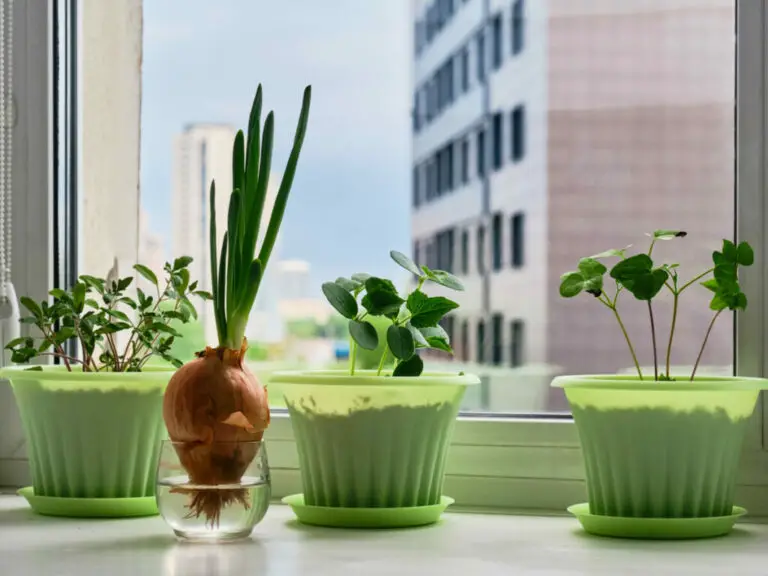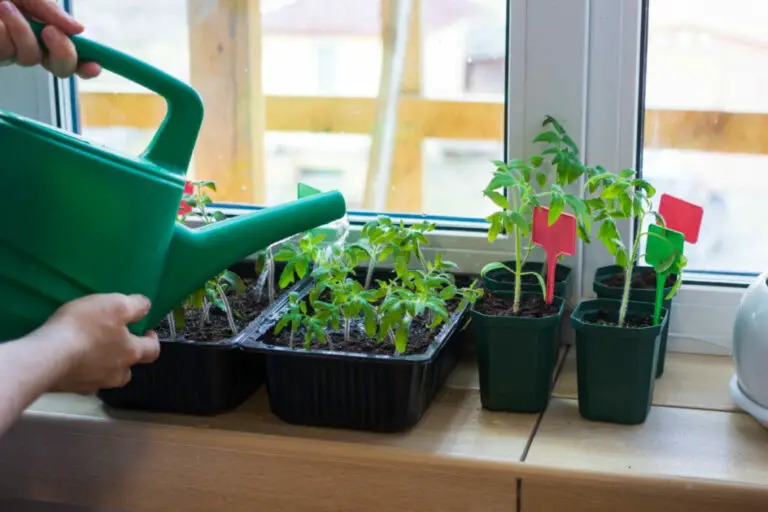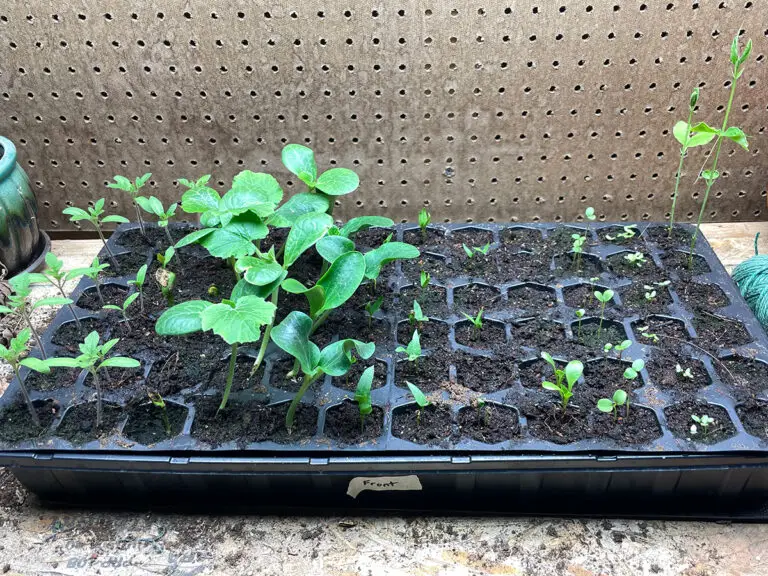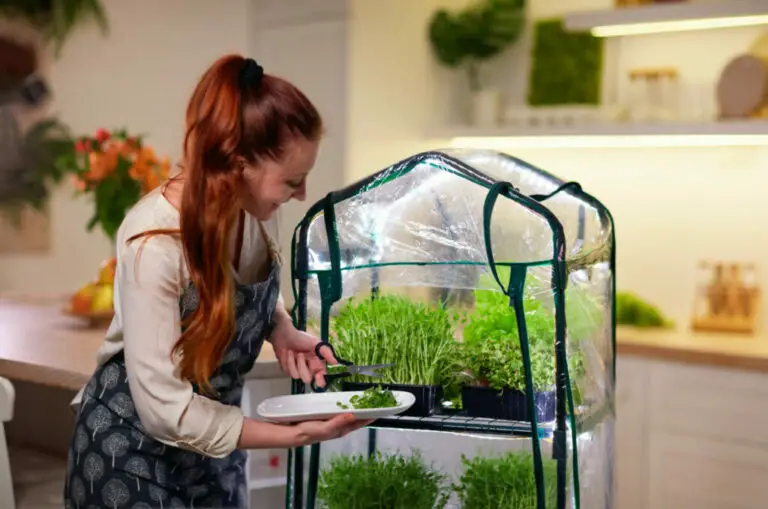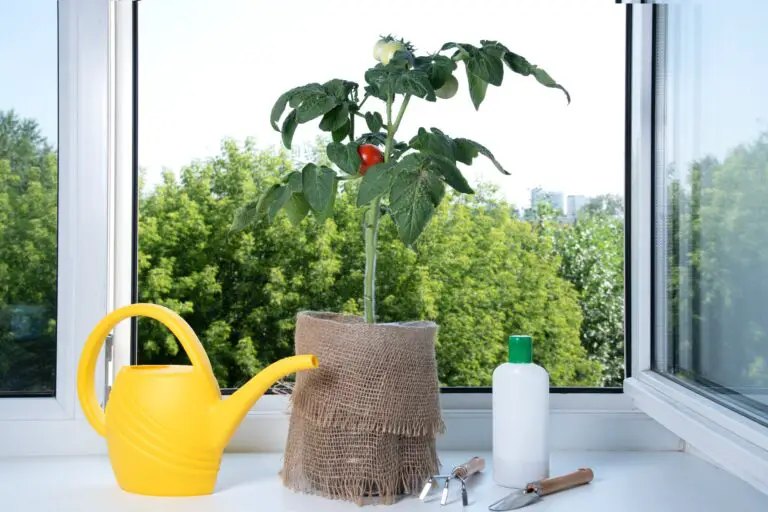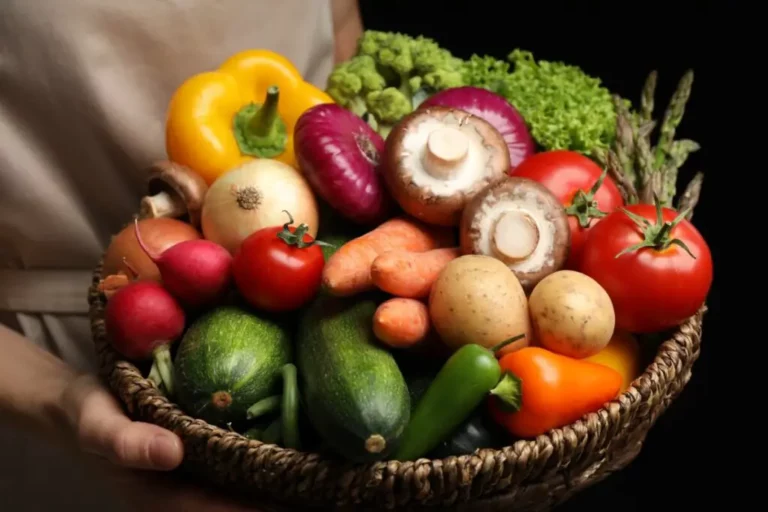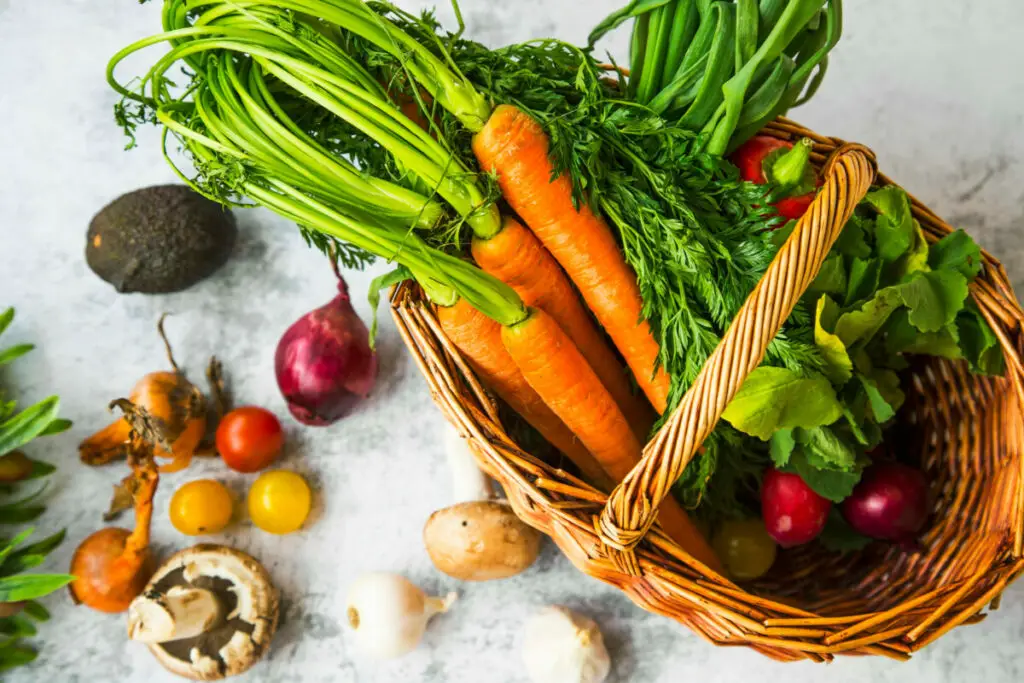
Has growing a garden, specifically an indoor garden, ever struck your fancy?
Keep reading to learn about vegetables that you can grow indoors and outdoors.
1. Carrots
Carrots don’t require much light, which makes them perfect for growing indoors. More light helps them grow more quickly, but they will grow as long as they get exposure to at least some light. Smaller amounts of light makes them grow more slowly. They are cool-temperature vegetables that grow well in temperatures above 60 degrees Fahrenheit.
A great type of carrot to try for indoor gardening is a variety called Tonda di Parigi. These are small and round rather than long and narrow, so they are perfect for pots. However, you can grow any variety of carrots as long as you have a deep enough container.
2. Scallions
Scallions don’t require as much sunlight as other vegetables. They are also very low maintenance and easy to care for. Scallions are perennial, which means that they can live for 3 or more growing seasons. If you leave them in the soil, they will continue to grow new bulbs and multiply. This will form a clump that can be pulled apart and transplanted to grow and create new plants.
3. Cherry Tomatoes
Cherry tomatoes love warm weather, so they require at least 8 hours of sunlight. However, they can still thrive indoors under the right circumstances. Micro-tomatoes can be grown in a small 6-inch pot and yield great results. They will have even better results if they are grown in a larger one-gallon pot. This will give the roots more room to develop, which will help the plant thrive. This method will also yield a lot more tomatoes. Lightly shake the plant each day to help distribute the pollen in the flowers.
4. Micro-Greens
These vegetables are the easiest plants to grow indoors. Even though they are small and low maintenance, they are packed with vitamins and nutrients. For the best results, use a propagation tray or an aluminum baking sheet. There is no need for drainage holes because these plants don’t require that much water.
To plant micro-greens indoors, fill a tray with 2 inches of potting soil, then cover the seeds with a thin layer of soil. Water the soil lightly until it is moist. Keep the soil moist for best results. Sow seeds every 7-10 days.
5. Salad Greens
Some of the best vegetables to grow indoors are salad greens like spinach, kale, and arugula. These greens are very tolerant when it comes to cooler temperatures, which makes them perfect for most indoor environments. They can also be grown closely together, which is good if you don’t have a lot of space to grow plants. Sow the seeds about 2 inches apart. They will need a minimum of 5 hours of direct light every day, so you’ll need to either keep them in a window, or invest in some grow lights.
6. Radishes
Radishes grow very quickly and don’t need quite as much light as other veggies, which makes them perfect for a beginner gardener. All they really need is a lot of space so their bulbs have the ability to grow. They don’t need a very deep container because they have very shallow roots. Space radish plants 3 inches apart. You can harvest these vegetables when the roots are about 1 inch in diameter. The leaves of radishes are also edible, so don’t throw them away!
7. Garlic Greens
After leaving a garlic clove in the fridge for a little while, little green spouts will start to appear. Those greens are perfectly edible and full of flavor. They taste like a cross between onion and garlic. Most people use them the same way you would use onions or scallions: raw or cooked. Plant the garlic cloves 2 inches apart and 2 inches deep, with the pointy side facing up. The green sprouts will grow up to 6 to 8 inches tall. The plant is also perennial, so you can keep harvesting it as long as you don’t harvest the bulb.
8. Hot Peppers
Peppers usually thrive in warmer temperatures and are self-pollinating, which makes them perfect for an indoor environment. They thrive at about 70 degrees Fahrenheit and need about 14-20 hours of sunlight a day. Make sure to pot them in a container that’s at least 8 inches tall. Make sure that the soil is dry before watering the plant. Peppers are self-pollinating, so all you will need to do is gently shake the plant a little to distribute the pollen from flower to flower.
9. Peas
Peas are typically grown outdoors because they have long, 6-foot, tangled vines when they are growing. But there is a certain variety of pea that does not grow in a vine. This variety is called tendersweet peas. It grows up-right about 18 inches and doesn’t need any support.
You can also grow a variety called bush peas. These peas grow compact and bushy. Be sure to give the peas as much light as possible to help them mature more quickly.
10. Herbs
Many people like growing herbs like chives, parsley, cilantro, oregano, mint, rosemary, sage, and thyme. These plants love sunshine and need at least 6 hours of direct light per day, but will greatly benefit from more. They thrive in temperatures around 70 degrees Fahrenheit.
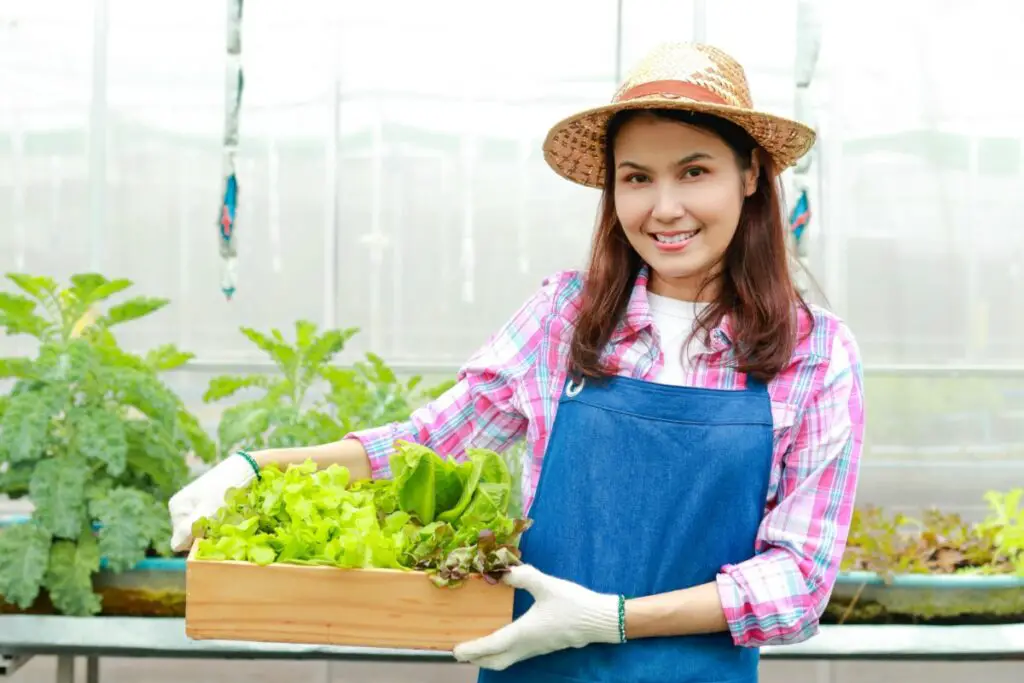
Vegetables that Should not be Grown Indoors
1. Squash
Squash grows extremely fast and large in a very short amount of time. This is great, but not for an indoor environment. Squash is also a wildcard when it comes to transplanting. This is because there is a risk of weakening the plant and making it susceptible to pests and disease. The squash family includes cucumbers, summer squash, winter squash, pumpkins, and all melons.
2. Corn
You should never start growing corn indoors. They do not transplant well because corn typically goes through a transplant shock. A lot of people try starting their corn indoors and then moving it outside later on. This will generally not work. Directly sow it outdoors if you want a successful corn crop.
3. Lettuce
When you directly sow your lettuce outdoors, it will thrive. However, it won’t grow well if you plant it indoors. If you were to grow lettuce indoors, you would also need a lot of space to do so, which a lot of people don’t have.
4. Tomatoes
Above, we talked about how cherry tomatoes can be grown indoors. However, growing larger tomatoes like Roma tomatoes is very different. Regular tomatoes need a ton of sunlight. In order to successfully grow regular tomatoes indoors, they need an extensive grow light, which takes up quite a bit of space and is simply unnecessary. Just grow them outdoors.
5. Turnips
Root veggies aren’t the best when grown inside because they do not transplant well. In order to grow this plant successfully indoors, you need a lot of space and patience. You can’t transplant these outdoors, so they need to reach full maturity indoors if they were first planted there.
6. Bell Peppers
Bell peppers are a lot like regular tomatoes when it comes to their growing environment. They need a lot of space and a ton of sunlight. It’s possible to grow bell peppers indoors, but it can become very difficult. Bell peppers also need an extensive grow light. They like the climate to be very warm. That’s why it’s best to just grow them outdoors when it is warm and sunny rather than grow them indoors.
7. Potatoes
Just like all of these vegetables, it’s possible to grow potatoes indoors, but it can be very difficult. They grow far beneath the soil and are relatively large plants. They grow much better when there is a lot of space for their roots to spread out.
8. Dill
Dill is an incredibly hard vegetable/herb to transplant. They are part of the Apiaceae family, which means it has a very long taproot. This root is what makes it extremely hard to transplant successfully.
9. Beans
Beans mature incredibly quickly. It only takes about 60 days for them to be ready for harvesting. Because of that, there is no reason to start germinating beans indoors. The roots are also very fragile and thin, so transplanting them successfully can be very hard to do.
10. Zucchini
Zucchini require a lot of sunlight, which can be hard to achieve indoors. It is also a very large plant that requires frequent pruning when it’s grown indoors. Zucchini is a delicious plant that is often not a gardener’s first choice for an indoor plant.
How to Start an Indoor Vegetable Garden
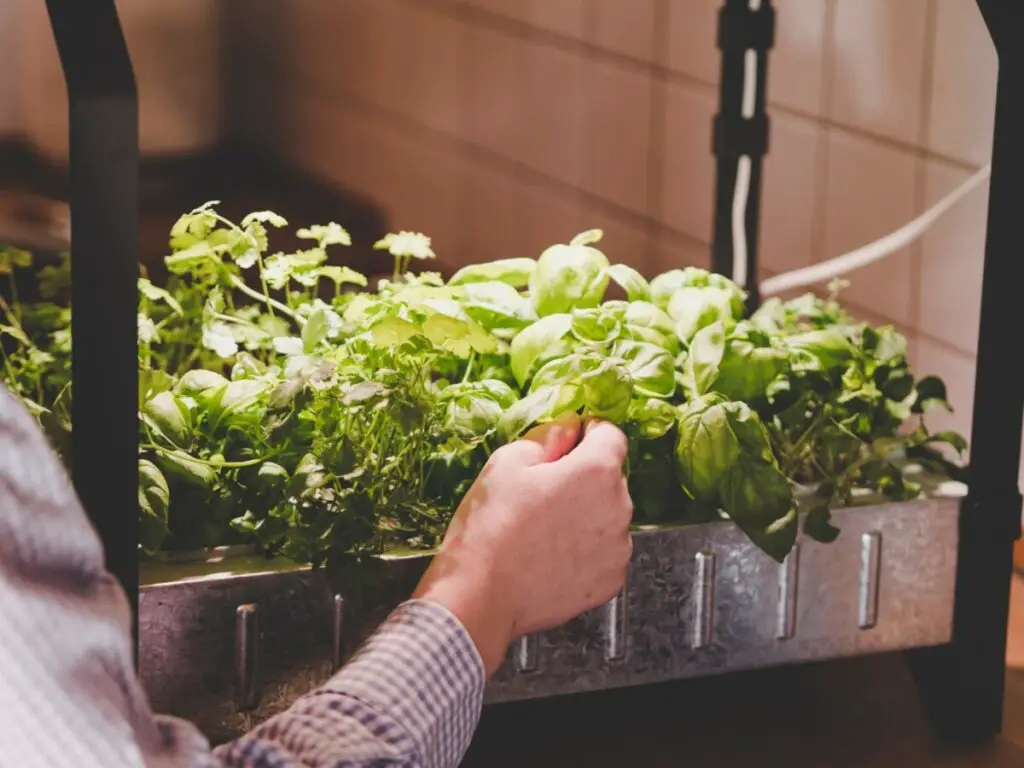
Provide a lot of Sunlight
The most important thing that is needed in order to start growing an indoor garden is light. It’s best to have an indoor garden very close to a window so that the plants have as much sunlight as possible. It’s best to place the vegetables next to a south-facing window so they get as much sun as possible during the day. Most vegetables need at least 6 hours of sunlight a day to thrive.
Use the Right Containers
Almost any type of container can be used to grow vegetables as long as they have drainage holes. Some of the most common containers people use indoors include:
- Terracotta pots
- Plastic pots
- Wooden planters
- Window boxes
- Fabric pots
Make sure to have a drip tray to catch the water that comes out of the pot so it doesn’t make a mess on any surfaces.
Have Water and Humidity
The dry air in an apartment or home can be very tough on plants. It drys out the soil quickly. It would be a good idea to invest in a room humidifier so that the plants stay hydrated. Keep the plants away from heat sources and make sure to water them often.
Potted plants dry out much faster than plants outdoors, and those in small containers dry out the quickest. Check on your plants daily and water them until water drains freely out the bottom of the container. Water again once the first inch of the soil starts to feel dry.
Use High-Quality Potting Soil
Potting soil is actually made from ingredients like perlite, vermiculite, and peat moss. This mix of ingredients helps retain moisture and drains excess water. Make sure that the soil doesn’t include soil from the garden because it is too dense and will potentially suffocate the roots of the plant. There is also the risk of introducing outdoor pests and diseases to indoor plants.
Use a Fertilizer
Indoor-grown vegetables benefit greatly from fertilizers throughout the growing season. Fertilizers add valuable micronutrients. These nutrients stimulate root growth, reduce plant stress, increase pest resistance, and increase the yield of the plant.
Good Room Temperature
Indoor vegetables thrive at room temperatures between 65 degrees Fahrenheit to 75 degrees Fahrenheit. Keep the plants away from heating vents and fireplaces that could potentially dry them out.
-Indoor Gardening Pros and Cons
Pros: Indoor gardens can relieve stress and boost creativity and productivity. They can also boost focus and promote recovery. Indoor plants also have the ability to improve air quality in a household as well.
Cons: Indoor gardens are messy and a lot of work. Plants in indoor gardens can also harm pets. They also collect dust, outgrow containers quickly, and the soil that indoor plants grow in can grow mold.
We still believe it’s a great idea to plant an indoor garden, there are just extra precautions that you may need to take to make sure that your plants and household both stay healthy. Just take extra care and pay a lot of attention to the plants when growing an indoor garden, and things should be fine.
Overall, there are many vegetables that will thrive in an indoor garden, but there are also a lot of vegetables that won’t grow well in an indoor garden.

